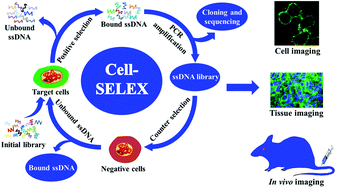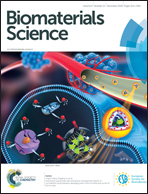Differentiating breast cancer molecular subtypes using a DNA aptamer selected against MCF-7 cells†
Abstract
Aptamers are single-stranded DNA or RNA oligonucleotides selected by systematic evolution of ligands by exponential enrichment (SELEX), which show great potential in the diagnosis and personalized therapy of cancers, due to their specific advantages over antibodies. In the past years, though great progress has been made in molecular subtyping of breast cancer, it remains a challenge in clinical medicine, which plays a crucial role in the treatment. In this study, a ssDNA aptamer MF3 against MCF-7 breast cancer cells was developed by Cell-SELEX for differentiating breast cancer molecular subtypes, which showed favorable specificity and binding affinity towards MCF-7 cells with a Kd value of 82.25 ± 25.14 nM. The aptamer could not only successfully distinguish MCF-7 breast cancer cells from MDA-MB-231 and SK-BR-3 breast cancer cells and MCF-10A human normal mammary epithelial cells, but also could differentiate MCF-7 cells from other cancer cells or normal cells. Moreover, both in vivo and in vitro fluorescence imaging studies demonstrated that aptamer MF3 was able to distinguish tumor-bearing mice and xenograft tissue sections of MCF-7 breast cancer cells from that of MDA-MB-231 and SK-BR-3 breast cancer cells. All these results suggested that aptamer MF3 is a potential tool for differentiating molecular subtypes and diagnosis of breast cancer.



 Please wait while we load your content...
Please wait while we load your content...